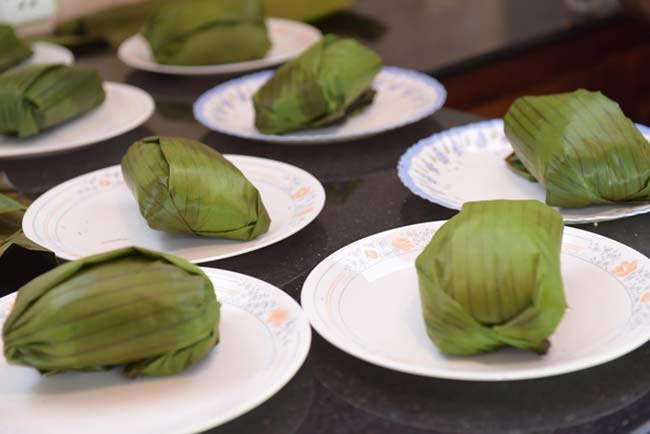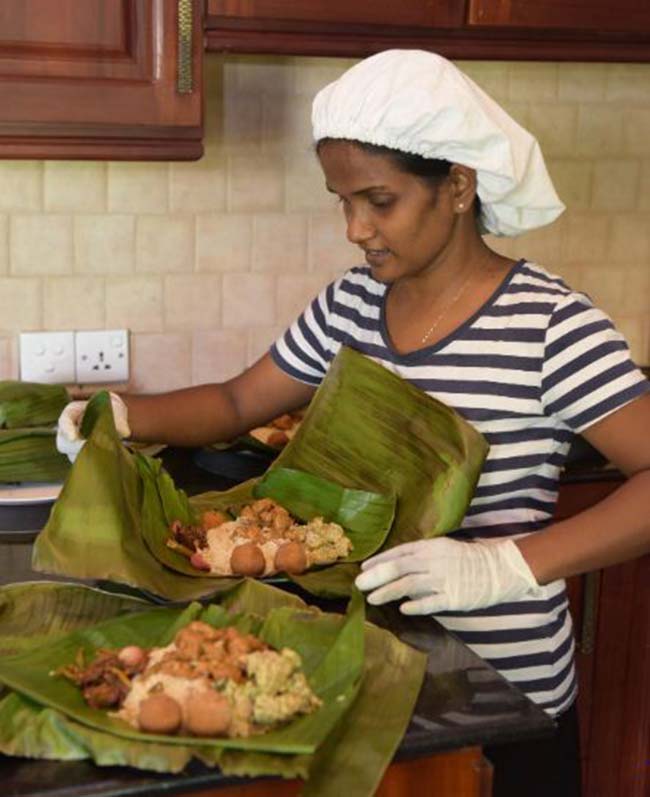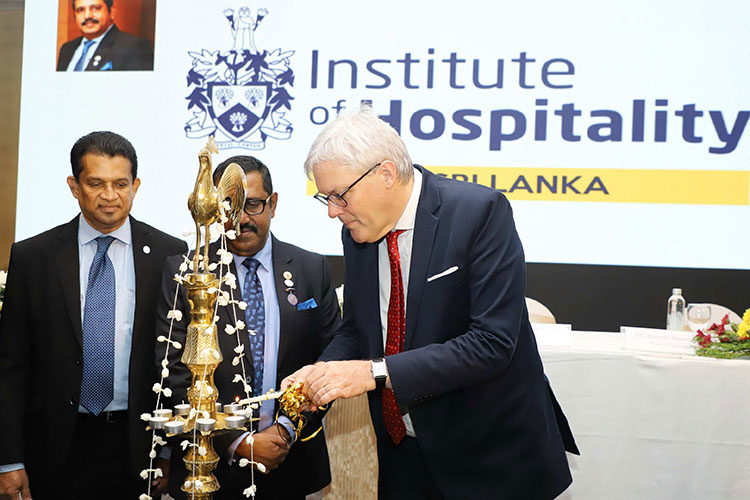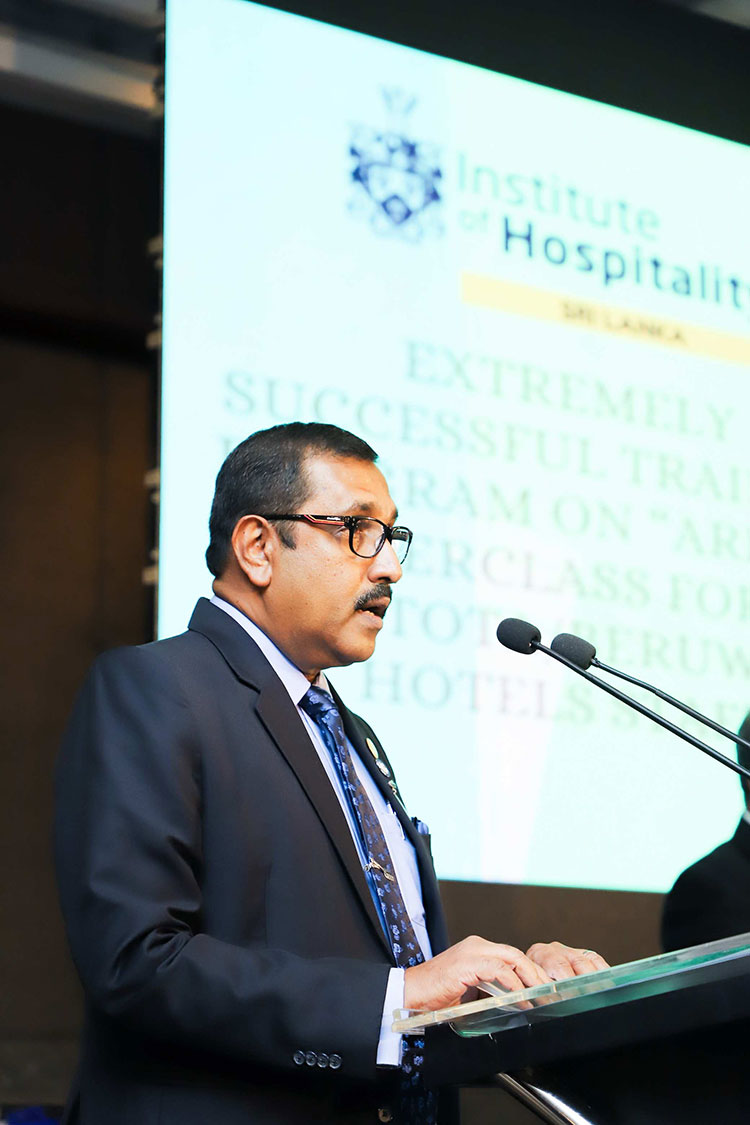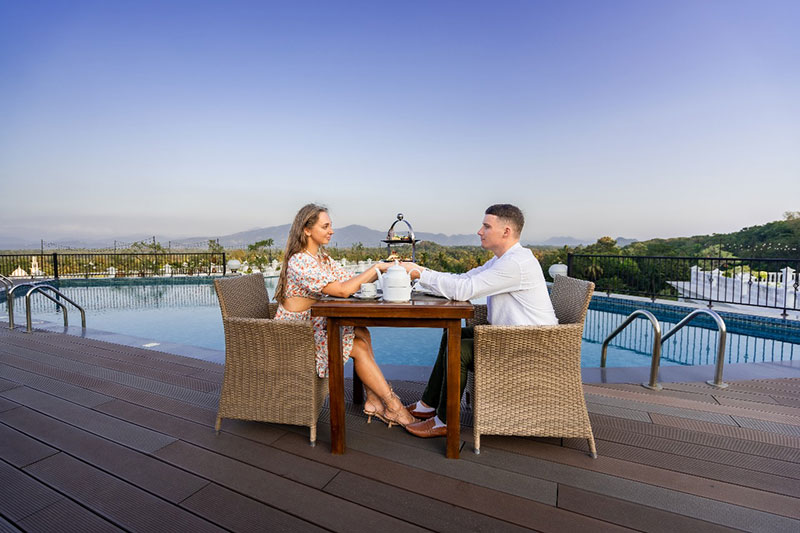Life style
In Sri Lanka . Lamprais keeps the Dutch Burgher legacy alive
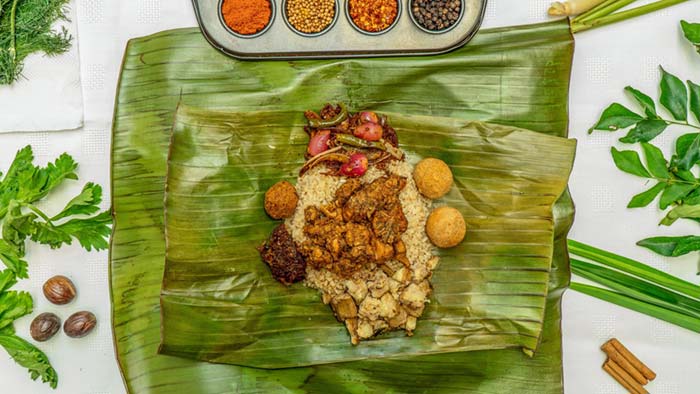
by Zinara Ratnayake
It’s Lansi food,” Stephanie Herft begins to describe lamprais. Herft is the founder of Lansi’s, a home-based food delivery business that began in May 2019, in Colombo. I’m talking to Herft over the phone on a Sunday evening. She had just delivered a carton of lamprais, a Sunday afternoon staple at Lansi homes in Sri Lanka.
Every Sunday, Herft’s extended Lansi family gathers at her aunt Jennie’s house in suburban Colombo for an afternoon feast. Like most good things, preparing lamprais involves love and labor. It includes cooking rice in meat stock and making a special curry with a finely diced meat mix: chicken, beef, pork and mutton. There are several other condiments.
“It’s family work,” Herft chuckles.
On many afternoons, Herft would slice onions, while her aunt would prepare the rice, and others were busy with condiments. Together, they perfected the recipe of Herft’s great great grandmother.
“We sold Christmas cake, cards and lamprais every year at a small stall at the church fair,” Herft says, recalling the Christmas days. Her grandparents played Jim Reeves vinyl records on their old rickety record player whilst the extended family prepared lamprais and sipped on king coconut wine. “I remember the smell of lamprais wafting through our living room,” she says.
It was this smell that once charmed me at the VOC cafe at the Dutch Burgher Union (DBU) in Colombo. The waitstaff served me lamprais, a small parcel of food wrapped in a banana leaf, baked and nicely warm.
Like Herft says, lamprais is a fading culinary creation of the Lansis — or, the Dutch Burghers, an ethnic minority in Sri Lanka. This small packet of food itself is a vague reminder of colonial history, and a nod to the existence of the fast disappearing Dutch Burgher community in the island.
From the 15th century, Dutch ships sailed across Asia with merchants from Northern Europe. These merchants from Holland, France, Germany, Switzerland, England and other European nations belonged to the newly emerging middle class. Many of them joined Vereenigde Oost Indische Compagnie (VOC), or the Dutch East India Company founded in 1602. Their headquarters were in Batavia, present-day Indonesian capital Jakarta.
During this time, the Portuguese, who entered Sri Lanka in 1597, ruled over the low country coastal belt. They controlled the island’s rich spice trade. In 1658, Dutch took over the Portuguese to rule maritime Sri Lanka, then Ceylon, until the British arrival in 1796. Many of these Northern European merchants settled down in Sri Lanka and married people of Portuguese and local origin. This new social group of European descendants came to be identified as Burghers (this German-originated term translates to residents of a city). In Sinhala, the commonly used language in Sri Lanka, they were called Lansi, a term derived from Dutch Hollandsche, meaning inhabitant of Holland. From this socio -cultural concoction birthed the lamprais.
The word lamprias comes from the Dutch word lomprijst, which loosely translates to, a packet of food. In her book A Taste of Sugar & Spice: Cuisine of the Dutch Burgher Huisvrouw in Olde Ceylon, author Deloraine Brohier writes that lamprais was not European in origin, rather an improvisation of the Burghers, pairing the Asian staple rice and spices.
“Not to mention the plantain leaves in which they are packed which again are of tropical provenance,” writes Brohier. A common belief is that lamprais has roots to the Indonesian dish lemper, sticky rice sandwiched with a curried diced chicken mix that comes wrapped in a plantain leaf.
In traditional Burgher houses, preparing Sunday lamprais begins the previous night, with meat boiling for two hours and plantain leaves being cleaned. The next morning, women in the household begin their chores, adding curry leaves and pandan leaves to butter browning in a pot. Boiled rice goes into the frying mix, followed by the meat stock. A crushed mix of spices such as cardamom, cinnamon, cloves, lemongrass and peppercorns wrapped in a muslin cloth is placed in the pot, scenting and flavoring the rice as it cooks.
For one lamprais, a lump of boiled rice accompanies a dessert-spoonful of the mixed meat curry cooked with diced chicken, pork, beef and mutton. A traditional lamprais features exactly two frikkadels, meatballs spiced with finely chopped garlic and fresh green chillie.
There are condiments like blachang, dried prawn ground into a paste with pepper and garlic; seeni sambol, a caramelized onion accompaniment sprinkled with fish flakes. There is brinjal pahi, pickled eggplant with notes of sour-sweetness, and a vinegar-infused tang.
“Our family recipe also features an ash plantain curry,” Herft tells me, although it’s absent in most lamprais meals. All these ingredients sit neatly inside a banana leaf warmed over a fire to make it more supple. “It’s not bigger than your palm,” Herft says, referring to the size of the authentic lamprais, which bakes in an oven for more than 10 minutes until the aroma of the banana leaf seeps in.
But over the years, commercially made lamprais took many forms, adapting to the demands of the dominant Sinhalese culture of the country, and even going through gross misinterpretations. Even at the Dutch Burgher Union in Colombo now, the lamprais is a large packet of rice, as opposed to the handful of rice.
“It became very Sri Lankan,” says Rienzie Trek, food and beverage manager at the VOC cafe by DBU in Colombo, laughing as he talks to me about the history of the dish. “It was a snack in the past. When our ancestors tottered long journeys, they would carry a few packs of lamprais with them,” he says. “But now everyone eats it as a main meal.”
In Sri Lanka, influenced by the majority Sinhalese culture, rice is the centerpiece of every dining table. A popular phrase in Sinhala “udetath bath, dawaltath bath, retath bath,” meaning “rice for morning, afternoon and night,” suggests the island’s fondness in devouring rice for every meal.
Ancient farmer-families gathered energy for hard labor from their carb-heavy rice meals. With time, societies and economies changed with people shifting to desk jobs and the common use of machinery in agriculture. However, the carb-rich rice culture (which birthed to fuel energy for hard labor) continues even today.
“Customers complained that the quantity of rice in lamprias wasn’t enough,” says Prabhath Jayasekara, Head Chef at the VOC cafe. “So we had to increase the size of our lamprais.”
In many places, there’s a tendency to name any rice packet wrapped in banana leaf lamprais. When I last ate “lamprais,” at my university canteen, turmeric-coloured yellow rice accompanied a grilled chicken thigh instead of the curried meat mix. There was an egg, boiled and fried. Frikkadels were reduced to a cutlet—a deep-fried, breadcrumb-covered golden ball of potato and canned fish.
I talked to Herft about these misinterpretations, curious to know how Dutch Burghers felt.
“Someone called us to ask why we didn’t include an egg in our lamprais. My aunt Jennie spoke to them for 10 minutes, explaining that the authentic lamprais didn’t come with an egg,” she laughs.
Herft explains that culinary traditions transform, and everyone’s version of one’s food is different. “But our oldfolk are very protective of their traditions,” she says, “It’s fair because lamprais is the only popular dish that represents the Dutch Burghers. It is a symbol that we still exist.”
During the British colonial regime, many Dutch Burgher families adopted English as their mother tongue. English became a deciding tool for one’s status in society. It’s during these days that the Burghers rose as the new elite in the island, acquiring reputed administrative posts in British Ceylon as English speakers.
British left in 1948, and in 1956, the Sri Lankan government passed Sinhala Only Act, replacing English with Sinhala as the sole official language of the country. This turn of events threatened the socioc-cultural status of the Dutch Burghers. Many families fled Sri Lanka in the coming decades. In her book, Brohier notes that a census done in the 1940s revealed that 0.8 percent of the total population were Dutch Burghers, which was reduced to 0.2 percent in 1981. In her 2012 book, Brohier mentions that Burghers number to only 15,000-30,000 today in a total population of 21.67 million.
“I told Aunt Jennie that we should start selling our food,” Herft says. Their small business now employs single mothers, providing them an income in the pandemic when economies are halted. “It’s what our great great grandmother did. She was a philanthropist and someone who championed Dutch Burgher dishes. We are carrying her legacy forward,” she says.
The authentic lamprais disappears fast and wide, just like its creators, the Dutch Burghers from the island. The quest to save the lamprais is also a quest to reclaim the legacy of the Dutch Burghers.
BBC
Life style
Camaraderie,reflection and achievements

Institute of Hospitality Sri Lanka
 The 32nd Annual General Meeting (AGM) of the UK-based Institute of Hospitality’s Sri Lanka Chapter was held recently at the Ramada Hotel Colombo,.The event provided an evening of camaraderie , reflection of the past and present achievements,setting new benchmarks for the future
The 32nd Annual General Meeting (AGM) of the UK-based Institute of Hospitality’s Sri Lanka Chapter was held recently at the Ramada Hotel Colombo,.The event provided an evening of camaraderie , reflection of the past and present achievements,setting new benchmarks for the future
The AGM had the presence of two distinguished guests, the Chief Guest Opposition Leader Sajith Premadasa, and the Guest of Honour British High Commissioner to Sri Lanka, Andrew Patrick. Their inspiring speeches were lauded by all hoteliers who were present at the occasion
A special thanks was extended to Robert Richardson, CEO of the Institute of Hospitality UK, along with his team, sponsors, committee members, and all attendees for making the event memorable.
Dr. Harsha Jayasingh, Past President of the Institute of Hospitality (UK) Sri Lanka Chapter, emphasised the Institute’s longstanding history and the strength of its Sri Lankan branch. “The Institute of Hospitality (IH) UK has a history of 86 years, and we are proud to be the Sri Lanka Branch. IH Sri Lanka is much stronger now with many members from all areas of the hospitality industry,” he stated.
Dr. Jayasingh highlighted the significant role of tourism in Sri Lanka’s economy,. He said tourism it is the third-largest source of revenue for the country. “Tourism accounts for about 13.3% of total foreign exchange earnings and employs 450,000 people directly and indirectly. The hospitality industry in this island of pearl holds tremendous potential for economic growth, job creations, and cultural exchange,” he added.
He also pointed out more women should be attracted to the industry and advocated for the use of technology in hospitality sector to attract the younger generation.
The newly appointed Chairman Ramesh Dassanayake spoke about the challenges faced by the industry, including the reluctance of youth to join the sector. . Dassanayake expressed concerns over the migration of staff between hotels and the overall ‘brain drain’ in the sector. ” We must maintain high standards in the hotel We must try to attract tourists to Sri Lanka, we must have with many facilities Hence, hotel schools and other professional institutions involved in skills development mustincrease their intakes,” he pointed out.
Chief Guest Sajith Premadasa emphasised the importance of eco tourism and said “We need to have an environmental policy related to tourism in place,” . .
The 32nd AGM of the Institute of Hospitality UK, Sri Lanka Chapter, was a testament to the strength and potential of Sri Lanka’s hospitality industry. The insights and commitments shared during the event set a new benchmark for the future.(ZC)
Pix by Thushara Attapathu
Life style
He recognizes human identity beyond boundaries of gender, race, nationality and religion.
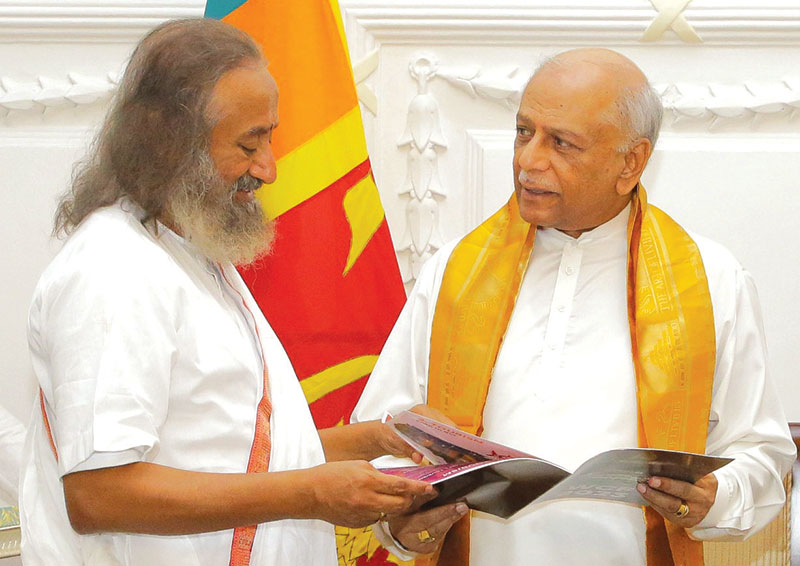
Visit of Sri Gurudev to Sri Lanka
Humanitarian, spiritual leader and Global Ambassador of Peace Gurudev Sri Sri Ravi Shankar (Sri Gurudev) was in Sri Lanka on a three day tour on the invitation of the Prime Minister of Sri Lanka Dinesh Gunewardene. Gurudev who inspired a wave of volunteerism and service to moot one of the largest volunteer-based organisations in the world – The Art of Living – visited the various projects under the aegis of the foundation and launched twelve vocational and technical centers around the island. He was accompanied by thousands of followers from Sri Lanka and around the world.
Gurudev who visited Sri Lanka for the sixth time also had a first day cover launched in honour of his visit. He is a strong proponent of spreading happiness, using the unique Sudarshan Kriya, yoga, meditation and practical wisdom to unite people, empower individuals and transform communities. His programmes provide techniques and tools to live a deeper, more joyous life, while his non-profit organisations recognize the human identity beyond the boundaries of gender, race, nationality and religion.
The Art of Living which has more than 30,000 teachers and over one million volunteers across 180 countries has touched in excess of five hundred million people around the world. CNN called it “Life Changing” and The Washington Post headlined it, “Fresh air to millions”.
In Trincomalee, Gurudev met with war victims and had a heartwarming engagement with the children from the children’s homes run by the Foundation. He also visited the Koneswara Temple in Trincomalee and graced the Kumbhabhishekam at Seetha ecogPnize the human identity beyond the boundaries of gender, race, nationality and religion. Amman temple at Nuwara Eliya. He held discussions with the trustees on the progress of the foundation’s social service projects, while also holding a special event – Ekamuthuwa – attended by a large number of dignitaries and his devotees from around the world.
His time with the Prime Minister was spent discussing the prospects of unity in diversity and uniting Sri Lanka by adding happiness into the formula of living. In addition he had discussions with the Speaker of the Parliament of Sri Lanka Mahinda Yapa Abeywardena, prominent business stewards and civil society leaders.
Life style
Bridal shows with opulence and luxury at The Epitome hotel in Kurunegala

by Zanita Careem
Envison your dream wedding day come to life at the Epitome Hotel, a prestigious city hotel in Kurunegala offering an unrivalled luxury rendors experience for weddings.
The venue is designed to embody opulence and luxury from all quarters for a spectacular wedding in kurunegala,Thier ballroom is the largest banquet facility in Sri Lanka It can be divided into six luxurious pillarless wedding halls on the ground floor and 25pax smaller banquet halls.
It can be easily named as a five star heaven in the heart of the city contributing to a myriad of immense experiences tailored to inspire and delight wedding experiences.
From opulent décor set up to exquisite table decor, lavish food, every detail is meticulously curated to spark your imagination and ignite creativity for a perfect wedding. The previous prestigious wedding shows season one and season two attracted large crowds
were unique events which gave the wedding vendors and potential clients had an opportunity to connect and interact with each other. Beyond being a showcase it was a chance for the wedding vendors to unite and contribute to the vibrancy of the wedding industry. The wedding show covered all area of the bridal industry providing a comprehensive variety of bridal supplies from Sri lanka and became the most popular bridal exhibitions in Kurunegala.This bridal exhibitions allowed brides and grooms to experience first hand the products and services available from suppliers in Sri Lanka
These wedding shows held at The Epitome created a benchmark and gave an opportunity for vendors to create connections to the utmost satisfaction said Harshan Lakshita Executive Director. of the magnificent Hotel
Our wedding shows featured experts and professionals in every field‘ It covered all areas of the bridal industry provided a comprehensive variety of bridal supplies from Sri lanka and became most popular bridal exhibition in this region.We are always open to everyone to join us at our wedding shows in the future. It is an opportunity to discover the incredible talent within our local wedding and bridal vendors to make meaningful relationships and plan thier special day at our breathtaking hotel The Epitome said General Manager Kavinda Caldera
The Epitome Hotel’s bridal show which will be held end of June will buzz with great ideas,advice and inspiration for all those who plan thier dream wedding
…….
The Hotel Epitome’s Wedding Season 3 will marked excellence, celebration and inspiration for those in the wedding industry. The exhibition halls will resonate with ideas on exquisite bridal wear to decor, florists , photography etc and showshowcase the rich tapestry of talent within the local wedding industry. .

